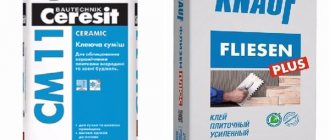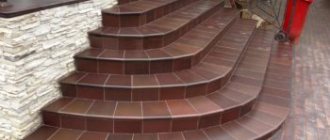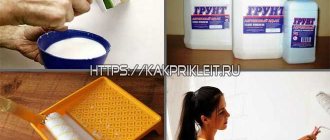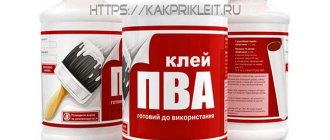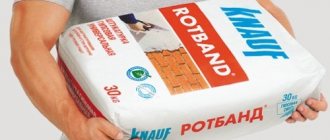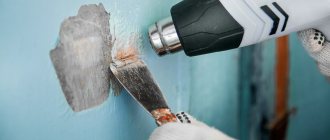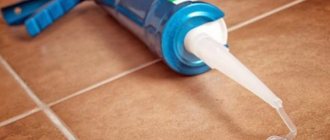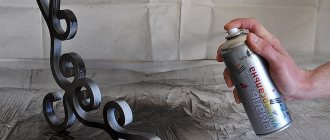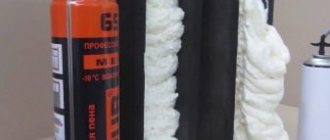Curing speed
In conclusion, it is worth paying attention to the question of how quickly the epoxy adhesive hardens. Some, in order to speed up this process, think that more hardener can be added
Thanks to this, the composition will quickly harden. However, this is a misconception. If you want to achieve rapid hardening of two surfaces, then you need to artificially increase the temperature.
Conclusion So, now we have looked at all the features of epoxy glue. Decide for yourself which one is better to choose. You can purchase a proven domestic manufacturer
When choosing, be sure to pay attention to the expiration date of the composition on the packaging.
Choose the glue that will fulfill its main purpose. We hope this material was useful to you. You have learned about the main properties of epoxy glue. Additionally, we suggest watching the video: How to properly mix epoxy resin.
Solidification stages
The mixture of epoxy and hardener does not stand up all at once; the formation of continuous and ultra-long (on a molecular scale) polymer chains does not occur in the entire mass of the epoxy composition. Polymerization occurs in separate fragments, which only then, over time, merge into a single polymer mass.
Useful to know > What varnish can be used to coat epoxy resin
The process of hardening, thickening and drying a product made of epoxy resin mixed with a hardener goes through several stages:
- Liquid fluid consistency, which allows, due to this fluidity, to fill the slightest irregularities in the cavity of the material being poured.
- Thicken the mixture to the state of cold buckwheat honey. In this form, the mixture is no longer able to completely fill surfaces with complex and pronounced relief.
- The density is already such that it slides out of an overturned vessel at a speed of no more than a centimeter per second. Suitable only for gluing large parts.
- It is so thick that when you try to separate at least part of the total mass, a long trail of resin stretches behind this part, freezing before your eyes.
- “Rubber stage”, it no longer sticks to your hands, you can bend, stretch, twist the casting from the composition.
- To the touch the product is made of plexiglass or plastic. Solid, durable, little susceptible to external influences.
Required Security Measures
When working with epoxy resins, do not forget about safety measures. After all, this is only a ready-made, hardened epoxy mixture that is chemically neutral and does not pose any danger to human health. During the hardening process, the resin mass, especially in its “hot” version with TETA hardeners, releases a lot of toxic substances that are dangerous to humans, such as formaldehyde and phenol.
Therefore, it is necessary to protect yourself from harmful effects using disposable latex or even cotton gloves, a respirator, both at the stage of hardening of the resin with the release of aldehydes, and during the final finishing in the form of grinding and polishing with their inevitable formation of dust. The room where work with epoxy is carried out must be equipped with forced exhaust ventilation.
How long does it take for epoxy resin to dry? Is it possible to speed up this process?
The curing or drying time of an epoxy compound, whether it be jewelry epoxy, flooring pour-over, or epoxy adhesive, depends on many factors. The key role is played by the age of the composition or how many years have passed since the release of the epoxy material by the manufacturer, the shelf life correlated with the date of production. Among the factors influencing the polymerization rate, significant quantities will be:
- Composition of the hardener reagent.
- The amount of hardener when added to epoxy resin or adhesive.
- The temperature at which the components are mixed and the finished composition hardens.
- The area of the surface being poured or its volume.
Expert opinion Oleg Vasiliev Master in the manufacture of furniture and interior items from epoxy resin. She creates unique items to order in her own production. to the master We cannot resist saying that the terms “dries” or “hardens” are practically not correct and are used only for everyday conversation. The mixture of epoxy resin and hardener goes through the curing stage.
Common brands
There are many epoxy adhesives from imported and domestic manufacturers on the Russian market:
- “Moment” (Henkel) is a heat-resistant adhesive composition of a high strength class, developed on the basis of epoxy resin and packaged in small tubes (50 g) or in bulk packaging intended for reusable use. Representatives: “Super Epoxy”, “Epoxylin”.
- TechnoNIKOL is a high-temperature polyurethane adhesive composition, presented in the form of a paste-like mass. Before use, it is recommended to read the instructions for use and mix, combining the components. Used for laying parquet, natural stone and ceramic tiles, it has high mechanical strength and is shock-resistant and does not conduct current.
- “EDP” (NPP Rogneda) is a two-component product used both in production and in everyday life. It has high adhesive properties and high bonding strength.
- Flex is a multi-component product used in industry and production for interior and exterior work. Designed for bonding lines up to 5 mm per cut.
- Sikadur 31cf normal - instantly glues metal products. The level of fixation can be compared to heat treatment in terms of strength. Used both in production and at home.
- "ED-20" is an epoxy resin, which is an oligomer. Polyamide is used for hardening. Used as an adhesive, sealant, protective coating or reinforced plastic. In order to make the mixture, you need to dilute the components, stirring until smooth.
- Done Deal is a high-strength, quick-drying, conductive adhesive that reliably and quickly glues any combination. The packaging is presented in the form of a syringe, the mixture is black.
- "Poxipol" - cold welding or fiberglass. Available in two tubes in the form of epoxy resin and hardener. Poxipol glue dries in 5-6 minutes. After this time, it hardens completely.
- Eporip Mapei is a two-component, heavy-duty product designed for adhesion to fresh concrete mix and old concrete. Epo is widely used to correct cracks in screeds. Does not contain solvents.
The best brands are Titan, Abro, Endfest 300, Uhu, Mapei, Ultima (Ultima), Secunda, Eporip (Krasnodar). They are used for granite, concrete and polyurethane, as well as for plumbing. They can be used for car plastic and for gluing crafts with your own hands.
How to properly dilute epoxy resin with hardener?
It is necessary to prepare everything that will be needed during the work on connecting the components. To dilute the epoxy resin, use containers and a tool for mixing additives. It must be taken into account that the materials are toxic, so safety precautions should be observed. When mixing the composition during the development of a chemical reaction, a homogeneous mass is obtained.
Preparation of epoxy resin in small volumes
In this case, the technology of cold connection of components is used. Air temperature - no more than +25°C. In addition, the mixing process begins with a test reaction. First, a small amount of materials is used. If the finished sample meets the requirements and is characterized by the necessary properties, the mass production process continues.
Producing resin in large volumes
The main feature of the process of mixing materials in this case is the intense release of heat during the reaction. Epoxy resin solvent used in large quantities increases the temperature of the material, causing it to boil. This is a consequence of a thermal reaction. It proceeds more intensively due to the use of a significant number of components.
As a result of boiling, the composition becomes white and foams, then becomes cloudy. This material is not suitable for construction, finishing work, or waterproofing. In addition, if a large amount of toxic additives (for example, hardener) is used, it is necessary to organize effective supply and exhaust ventilation. At home, this work can be done using the heating method in a water bath.
How to mix components correctly?
If work is carried out in conditions of higher air temperature (above +25°C), the rate of hardening of the composition increases. As a result, the duration of work with such material is reduced. For this reason, it must be applied to the surface within half an hour. The ratio of hardener to resin may vary. It depends on the technology for preparing the material. The standard ratio is 10:1, with less resin being used. The hardener is added in larger quantities. The composition also includes a plasticizer. This component makes the material elastic.
You need to make sure that no drops of water get into the resulting mass. This will cause the resin to lose its adhesive ability. The recommended amount of plasticizer is no more than 10% of the total mass. First, this component and the resin are combined. Then the hardener is added in a thin stream. If you need to get a denser mass, the amount of the component is adjusted. Add the hardener to the mixture slowly over 10 minutes. If you quickly introduce this component, the material will boil and become unsuitable for use.
Resin curing time
The parameter depends on environmental conditions. At extreme temperatures, the material hardens quickly. If you mix the main components at room temperature, and the ratio of additives is 1:10, the duration of hardening of the material varies between 30-60 minutes. As the hardener is reduced, the composition retains its viscous structure for up to 2 hours.
Instructions for preparation and use
It is better to work in a ventilated area so as not to irritate the respiratory system with fumes from the epoxy. You need to wear protective gloves and clothing that you don’t mind getting dirty. The work area can be covered with newspaper or cloth so as not to contaminate the surface. Prepare the application tool and a container for mixing the ingredients in advance. You can use disposable tableware.
The product is processed before mixing the adhesive, since the solution must be applied immediately after production.
Before you start preparing the epoxy mixture with your own hands, you need to study the manufacturer's instructions included with the package. It indicates the proportions of the components of the resin and hardener. Different manufacturers have different ratios of substances. In universal liquid adhesive compositions, you usually need to mix 1 part hardener and 10 parts epoxy resin.
If the epoxy resin is viscous, it will be difficult to mix the components. To easily dilute the resin, it must be heated in a water bath or radiator to 50-60 degrees. Using a syringe without a needle, you need to measure out a small volume of resin and pour it into a container. Then take the required portion of the hardener and dissolve it in the resin, stirring vigorously to obtain a homogeneous mass.
After mixing the components, begin gluing the surfaces. Apply ready-made glue to one side and press both halves firmly, fixing for 10 minutes without moving. If a small amount of solution is squeezed out of the seam, it must be removed immediately with a napkin. Until the epoxy mixture has completely cured, the product must not be used or subjected to stress.
Sawdust and other fillers can be added to the prepared epoxy solution, which add additional volume, improve the quality of the finished compound and give the desired color. If you add sawdust to the epoxy, then you need to fill the mold with the finished mixture. You can use a spacer to make a product element. The frozen part can be sanded, painted and drilled.
Composition and properties
Epoxy adhesive is a thermosetting synthetic product. Its composition includes a solvent (acetone, alcohol, xelol and other organic additives), plasticizers (phthalic acids, phosphoric acid esters), epoxy resins and a hardener (rubber, diliamines, organosilicon resins, etc.).
It is better to give preference to epoxy adhesive, which contains oligomeric and polymer plasticizers, oligoamides, and oligosulfides. Their presence increases the quality of physical and mechanical properties. Moreover, this glue can withstand high loads for a long time.
What to do if epoxy resin does not dry well - video
As soon as all these components are mixed together, an adhesive composition is obtained that has the following features:
- Under the influence of household chemicals or detergents, it does not decompose and does not lose its properties.
- Based on the filler, the heat resistance is up to +250°C.
- The finished compound can withstand frosts down to -20°C.
- The resulting adhesive joint is able to cope with the negative effects of oil and gasoline, as well as precipitation.
- Dried glue is elastic. If the workpieces move slightly, this does not lead to rupture.
- The prepared glue does not shrink and, accordingly, does not crack.
- The joint with epoxy glue is waterproof.
- It has good adhesion to various types of materials, for example, it holds wood, drywall and the like well.
With all the positive properties of epoxy, this composition also has negative sides:
- If glue gets on your skin, it will be difficult to wash it off.
- After application, the one-component composition dries quickly. Therefore, it is necessary to work quickly.
- They cannot glue polyethylene, silicone and Teflon coatings.
- It is poisonous, so contact with dishes is strictly prohibited.
How to glue with epoxy?
Now step by step. We already have a lid with ready-made glue.
We prepare flowers and accessories.
We prepare accessories and flowers. We degrease the surfaces that we will glue with alcohol or acetone. Cold porcelain reacts normally to both substances.
We wipe the gluing areas with acetone or alcohol.
In order to fix the flowers on the fittings, we use Moment super glue. Glue them together to form a composition. Super glue is needed as a preliminary fixative.
We first fix the flowers using Moment glue.
It is important to leave plenty of gaps between the fittings and the flowers/leaves so that the epoxy can penetrate - it should cover as many surfaces as possible. Therefore, when performing preliminary gluing with “Moment”, you should not apply strong pressure
It is enough to simply “bait” the flowers, leaving room for a magic compound that will fix this beauty firmly.
We leave gaps into which the epoxy should penetrate.
When the product is assembled and the epoxy glue has reached the stage at which it is convenient to attach it with a match/toothpick, we begin pouring.
We pick up a drop of epoxy and use a toothpick to transfer it into all the gaps remaining between the flowers and the fittings. So we fill all the cracks drop by drop. If the glue has already started to flow out, wipe it off with a dry (and only dry!) cloth. We try not to drip epoxy onto the flowers themselves. If it gets dirty, again a napkin will help, you can then wipe it with Johnson’s oil or vegetable oil so that there is no trace left.
Pour epoxy glue a little at a time into all the cracks.
After all the cracks are filled, we leave the product to dry in a stationary position, making sure that the glue does not leak out (after half an hour or an hour it will stop doing this, but at first the filling may “float”).
After 12 hours we will see that the glue has hardened.
Cured epoxy
Preparing surfaces before gluing with epoxy.
Before gluing parts of the product with epoxy , it is necessary to analyze how such a connection will subsequently be loaded. What surfaces will be suitable for glue? If possible, it is necessary to leave as large beads of glue as possible near the seam to increase the rigidity and useful area of coverage of the glue. It is necessary to think about whether it might be worth pouring some additional adjacent surfaces with glue to increase the overall rigidity of the structure.
Our glued part today is a hollow sleeve, a curtain rod bracket. This part has cavities into which the epoxy will actually be poured . For good contact between the epoxy glue and the bushing, the internal surfaces of its cavities must be scratched and scored with a sharp object, otherwise the epoxy may peel off from the plastic surfaces. We will also tighten the part to be glued with a bolt, passing it through the central hole, which is not involved in the gluing process. However, we will wrap the outside of the sleeve with tape to prevent uncured epoxy from leaking out . Still, this, although loaded, is still an interior detail.
Main features of epoxy resin
When figuring out how long epoxy glue takes to dry, you should take into account the main technical features of such substances. Epoxy, regardless of product modification, is an oligomeric thermoactive compound. For a resinous substance, the transition from a liquid to a solid state occurs only when the mass is exposed to a special hardener.
The resin hardens only when using a special compositionThe hardeners used are various diliamines and amines, rubber, organosilicon resinous substances, etc. According to experts, for household repair work it is better to give preference to epoxies containing polymer and oligomeric plasticizers, oligosulfides and oligoamides. The presence of these substances increases gluing performance and improves the quality of the final work.
How long does it take for the composition to harden?
When specifying how long it takes for epoxy to dry, it is necessary to take into account a number of additional factors. The polymerization time is affected by the following indicators:
- age of the glue (period of use at the current expiration date), the “fresh” the resin, the faster the drying time will come;
- composition and type of hardener used;
- proportions of mixing the catalyst with the resinous substance;
- volume of treated surface;
- thickness of the poured layer;
- temperature at which polymerization occurs.
In the vast majority of cases, epoxy hardens within 1–1.5 days. If the volume of its use is too large, the final hardening time can extend to 6–7 days (at room temperature). The polymerization time can change dramatically if the dosage of the added hardener is not followed correctly.
For high-quality work, the proportions of resin and hardener must be observed.
The complete curing time is usually indicated in the attached instructions. Polymerization usually takes place in several phases:
- Liquid consistency. Observed immediately after adding the hardener. At this stage, the resin easily flows into all cavities and quickly fills the cavities.
- Thickening to the state of honey. The mass is no longer easy to pour and is not suitable for use on surfaces with complex terrain.
- Increase in density. At this stage, the resinous substance, when the vessel is tipped over, slides down at a speed of about 2 cm/second. This resin can also be used for gluing large and even parts.
- Rubber stage. The substance no longer sticks to your hands and has a “rubber” shape; it can be stretched, bent and twisted.
- Complete polymerization. Or hardening. At the final stage of the process, the epoxy becomes similar to strong plastic or plexiglass.
Are there quick-setting resins?
All epoxies existing in modern industry are divided into two large categories. Depending on the number of components included in the composition, resins are:
- Single-component. When used, they are completely ready for use. The polymerization process occurs at room temperature or with a slight increase in temperature.
- Two-component. The kit consists of resin and the hardener supplied with it. Such compositions are more popular. Polymerization begins only when the two components are mixed.
Many craftsmen are interested in the accelerated curing process and wonder if there is a quick-drying epoxy resin. Such compositions are produced under the brand name “jewelry” resins (or “decorative”). These are two-component masses used for creativity and design. The features of such substances include their complete transparency after hardening and increased cost.
Cured resin is a very durable material
Fast curing EDP adhesive
This product is produced in packages of 45/250 g and is two-component. The first bottle contains epoxy and a number of modifiers, the second bottle contains a hardener. Purpose of fast-curing adhesive:
- connection of composite and metal products, objects made of alloys, ceramics, glass, and other materials;
- repair and sealing of devices;
- sealing chips, defects, cracks.
Typically this type of EAF adhesive is used when fast curing is required. The product replaces cold welding.
Advantages of glue
The adhesive composition has the following advantages:
- ensuring the required level of strength after 6 hours from the moment of application;
- work at a temperature of 10-30 degrees;
- low labor intensity of the process, the ability to process the adhesive seam even before the end of complete polymerization.
Application of fast-curing EAF
Before use, surfaces should be carefully prepared - cleaned, degreased, and dried. To improve adhesion, sandpaper is used. The bottle with resin is placed in water at a temperature of 60 degrees for 8 minutes. 1.5 parts of epoxy are mixed with 1 part of hardener, the resin lifetime is 30 minutes. You can use any fillers - cement, chalk, alabaster, fibers, graphite in a volume of up to 20%. The composition is applied in a thin layer to both surfaces, connected and pressed. Leave the product in the fixed position for 6 hours. Afterwards it is completely ready for use.
There are areas of optical distortion in the resin
Possible reasons and tips
There are foreign inclusions in the coating or on the surface. The wrong abrasive was used
- The container and mixing tool must be clean. Avoid using containers with traces of fat.
- The surface must be carefully prepared. To sand epoxy resin, use #80 grit sandpaper.
- The surface must be clean from all types of contaminants, oils, fats and water. To remove dust from the surface, you can use a clean cloth soaked in isopropyl alcohol or clean water. Do not use acetone or dirty rags for these purposes.
- The coating must be applied within a few hours. After wet sanding and rinsing with water, it should not roll into beads - this indicates contamination of the surface. Wipe with a suitable solvent and rinse again with water until they disappear.
Purpose of epoxy glue
Every craftsman, builder, installer, and technical worker knows what epoxy glue is. This is an adhesive containing epoxy resin (epoxy), a polymer material that has excellent adhesion to different surfaces. Even with the advent of more modern adhesives on the construction market, epoxy does not lose popularity.
The adhesive composition is most often used in construction. It is ideal for concrete and for metal, wood and glass. Like cold welding, epoxy-based material is needed for bonding plastics (polypropylene, polycarbonate and many other types of plastic). The versatility of the glue makes it suitable for working with rubber, ceramics, and it is intended for stone (granite, marble, artificial materials). Epoxy resin is used to fill floors; it is part of primers, putties, tile mixtures, and mosaics.
How long does it last after it hardens?
Structures, materials and products created using epoxy resin are initially oriented to temperature standards established in accordance with accepted operating standards:
- Temperature from –40°С to +120°С is considered constant;
- the maximum temperature is +150°C.
But such requirements do not apply to all brands of resins. For specific categories of epoxy substances, there are extreme standards:
- casting epoxy compound PEO-28M – +130°C;
- high-temperature adhesive PEO-490K – +350°C;
- epoxy-based optical adhesive PEO-13K – +196°C.
Such compositions, due to the content of additional components, such as silicon and other organic elements, acquire improved characteristics. Additives were not introduced into their composition by chance - they increase the resistance of the resins to thermal effects, of course, after the resin hardens. But not only that - these can be useful dielectric properties or good ductility.
Epoxy substances of the ED-6 and ED-15 brands have increased resistance to high temperatures - they can withstand up to +250°C. But the most heat-resistant are resinous substances obtained using melamine and dicyandiamide - hardeners that can cause polymerization already at +100°C. Products in the creation of which these resins are used are distinguished by increased performance qualities - they have found application in the military and space industries. It’s hard to imagine, but the maximum temperature that cannot destroy them exceeds +550°C.
The main rules for working with e-discount
- Surfaces that will stick together must be cleaned, sanded, and degreased.
- The components of epoxy adhesive must be measured with maximum precision.
- The ambient temperature should not be lower than that indicated on the packaging as the “curing temperature” (but not the “operating temperature”).
- You can add third-party substances (dyes, etc.) to the resin and hardener if you do not expect high strength of the product. "Left" components can greatly influence the course of the reaction and the final characteristics. If you add oil paint, the glue will become less hard and flexible (and colored).
- It is better to add a little more hardener rather than be greedy (too much is also not allowed). Although there is always less of it in the package than needed. Therefore, when it runs out, the resin still remains (a bitter experience!).
- Do not allow water to get into the epoxy adhesive!
- If you are gluing two surfaces, the layer of glue between them should be thin. After applying the epoxy, the surfaces should be pressed firmly against each other for the next 12 hours.
Where is it used?
Let's consider what and where it is used for. In radio electronics, electrical engineering industry. Aviation and mechanical engineering, shipbuilding. Manufacturing and repair of parts and hulls of boats, yachts, airplanes, cars, etc. Production of furniture, sporting goods. As a component of filling and impregnating compounds, various sealants. Technology of acrylic plastic, a whole range of sanitary products. Polymer concrete – cast marble, including monuments. Various molds, reinforced fiberglass. In paints and varnishes, in fiberglass. Waterproofing of premises, swimming pools. The list is extensive.
Household repairs
For home use, it is ideal for gluing metals and alloys. In the repair of cars, heating, pipelines, mounting brackets. Not afraid of vibrations and shock loads, all kinds of deformations. As a putty with subsequent mechanical processing. Seal holes and cracks with filling. Restoration of stone, concrete, marble. Bonding leather, glass, porcelain, rubber in various combinations. Shoe repair. Excellent as a wood glue.
Masters of folk art work with epoxy materials in their design compositions. In construction, epoxy is in demand for concrete and anchor connections. Especially pouring self-leveling polymer floors. Compounds are also used when coating the surface of an old concrete coating before laying a new layer. For a more monolithic connection of the top concrete layer with the old concrete base.
You can glue the housings of household appliances, plastic bathtubs, washing machine tanks, spinning rods and fishing rods. Skis, rackets, clubs. Hard plastics, ABS. Almost everything, with rare exceptions. Fills the volume well.
Bauxite glue video
In the video you will see how I did some experiment. I decided to glue a stainless steel sink to a chipboard countertop. I used Russian-made universal epoxy glue. It's no secret that there are Chinese origins. I looked through furniture forums. Before this I tried different types of adhesive waterproof silicone sealants, but the quality of the repair was not at all satisfactory. Apparently the sink is deformed, or maybe too thin and that’s why it plays.
I decided to go with a non-standard method. I removed the remnants of old silicone, cleaned and degreased. Dried it for 5 - 8 minutes with a hairdryer. I heated the resin, diluted it 10 to 2. I applied the finished composition outside, it turned out too liquid. To quickly set and thicken, the solution had to be kept at elevated temperatures for 1 hour. Then use it.
Types and characteristics of glue
For practical use, several easy-to-use modifications are produced. There are no special differences between ED-5, ED-6, ED-20 and EDP. By agreement back in the USSR, different designations were introduced in order to know the manufacturer. Currently, there are only two types on the Russian market: ED-20 and EDP. Everything else is just variations of the original samples.
Common brands
Glue Moment The industry also produces special types that are used in very special areas. The characteristics of the glue depend on the purpose and form of release.
- Many people know the epoxy-based Moment glue. It is sold in tubes of 50 g. Bonding occurs within a few minutes, the strength is high. In this way glass is glued to metal.
- “Contact” mass is sold in the form of plasticine. It is used to repair and connect pipes and plumbing products. You can glue small shelves, for example, in the bathroom. The drying time of the epoxy glue in this plasticine is 2...4 minutes. Adhesive Cold welding
- “Cold welding” is an adhesive designed to join metal fragments. The strength of such a connection is at the level of welding. Used in the repair of aluminum parts that really cannot be welded. Fast-drying, effective adhesive.
- EDP is the most widely used. It is always present among car enthusiasts. Helps in solving any problems that may arise along the way. Glue Epoxylin
How to wash
If the glue gets on a surface that is not to be glued and has not yet had time to harden, it can be cleaned with a soap solution. Stubborn residues can be removed with acetone. The hardened mixture can be removed with liquid vegetable oils, under the influence of which it softens and peels off.
- Freezing. Epoxy can withstand low temperatures down to -20°C, so freezing it in a home freezer is ineffective. It must be removed with an aerosol refrigerant. If you spray it on the adhesive surface, it will become brittle. Afterwards, you need to remove the glue with a spatula or a blunt knife. Removal must be done carefully to avoid injury from glue fragments.
- Heat. The glue softens when heated with a household hair dryer or iron. Solid heat-resistant layers must be heated with a hairdryer with heated air flow at the maximum level for several minutes. The softened areas are scraped off with a spatula. Heat until all excess residue is removed. If epoxy drips onto the fabric, it needs to be heated with an iron, placing a cotton rag on the front side of the material.
- Scraping. Hard, scratch-resistant surfaces can be cleaned of the adhesive mixture mechanically. Any metal tool can be used for this.
- Exposure to chemical solvents. This method cleans wear-resistant materials that are not exposed to aggressive environments. Acetone, alcohol, butyl acetate, aniline, and toluene can be used as a diluent. You need to moisten the contaminated area with any of these products, wait until the glue softens and remove its remains mechanically. You can remove glue from mirror surfaces with acetic acid.
Why does epoxy resin not harden?
Epoxy is a resinous, viscous substance. Epoxy resin exhibits all its declared qualities only when it interacts with a special hardener additive. Thanks to the hardener, the process of polymerization and further strong adhesion of the bonded surfaces occurs, and the creation of exclusive products.
It is necessary to know and understand the polymerization processes in order to simplify the work with such material. If you don’t find out why the epoxy doesn’t harden and what to do in this case, your creative ideas will not be realized, and the resulting products will be of poor quality.
Epoxy resin is used to create various products
Error when mixing components
The most common problem is that epoxy resin does not cure and may not cure at all. If the proportions of the substances were violated when introducing the hardener into the resin, the epoxy will remain in a liquid state. If the sticky layer remains only on the surface and lasts for more than 1.5–2 days, it must be carefully removed and wait until the remaining mass has completely cooled.
To ensure the final result is perfect, carefully approach the process of mixing the resin with the hardener. In the classic version, 1 part hardener is taken for 10 parts of epoxy. If the ratio was correct and the proportions were maintained, this happens due to the poor quality of the hardener itself. The only way out is to carry out the work again, with fresh composition and strictly according to the instructions attached to it.
Incorrect pour point
Typically, epoxy resin hardens at normal room temperature. If the epoxy does not dry for a long time, the temperature conditions can also tell you what to do in this case. When the environment is heated, the polymerization procedure of the mass occurs faster. But when the air temperature drops, the resin will harden much longer.
One of the reasons for uncured resin is a violation of temperature conditions
What to do in such a situation? Try the following tips in practice:
- leave the product to harden at constant room temperature;
- if there is a decrease in temperature, provide air heating with portable heaters;
- if it is not possible to maintain a stable temperature, use special hardeners designed for low temperatures when working.
Experienced craftsmen recommend using a hardener of proven brands. And if you need a product for working at low temperatures, choose a hardener of the AF-2 and DTB-2 brands.
Poor stirring
One of the most common mistakes that beginners make. The reason for the poor curing of the epoxy lies in its insufficient stirring. In this situation, the hardener simply cannot fully combine with the resin and activate the polymerization procedure. To achieve the desired effect, you should not only use a high-quality hardener, but also mix it well with the resin.
Experienced masters advise stirring the ingredients carefully, slowly, thoroughly and deeply mixing the layers of substances. Too active actions are not necessary, otherwise air may get into the composition, which will then remain in the resin as unsightly bubbles and make the product weak and fragile. Stirring is done with a long stick, preferably wooden or plastic.
The resin requires proper and careful mixingIlliterate selection of components used
The question is the correct choice of the required hardener. Usually a suitable product is already included with the epoxy resin. But sometimes the catalyst runs out too quickly. It is worth purchasing it additionally, taking into account the brand and type of epoxy used. When choosing a hardener, it is better to get advice from a store, indicating the brand of resin you are working with.
Syringe and epoxy?
11.10.2013

